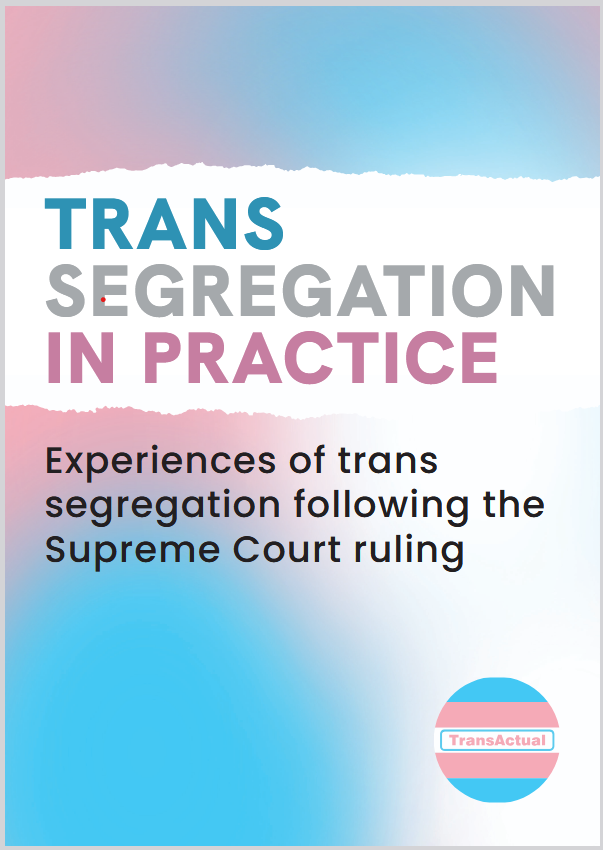Experiences of trans segregation following the Supreme Court ruling

Click here to download your copy of the trans segregation report.
In April 2025, the Supreme Court argued that there were no real winners or losers from its judgment. Evidence since is that this was simply untrue. For it is becoming increasingly clear that their ruling has already begun to exclude trans people from society.
Trans segregation has begun.
This report showcases testimonies from individuals, both cis and trans, who now find themselves being exiled from a life they knew and felt safe within just four short months ago.
It documents just some of the ways that trans people face increased discrimination in the wake of the ruling and the publication of the draft EHRC guidance.
Report summary
Spotlight on segregation
Every story is deeply concerning. Download the full report to understand the awfulness. The following selection represents the range of impacts reported to us as a result of trans segregation.
Click here to download your copy of the trans segregation report.
NOTE: a hardcopy version of this report will be released in due course that you may purchase for your library or academic institution. Email press@transactual.org.uk for details.
Last updated:
